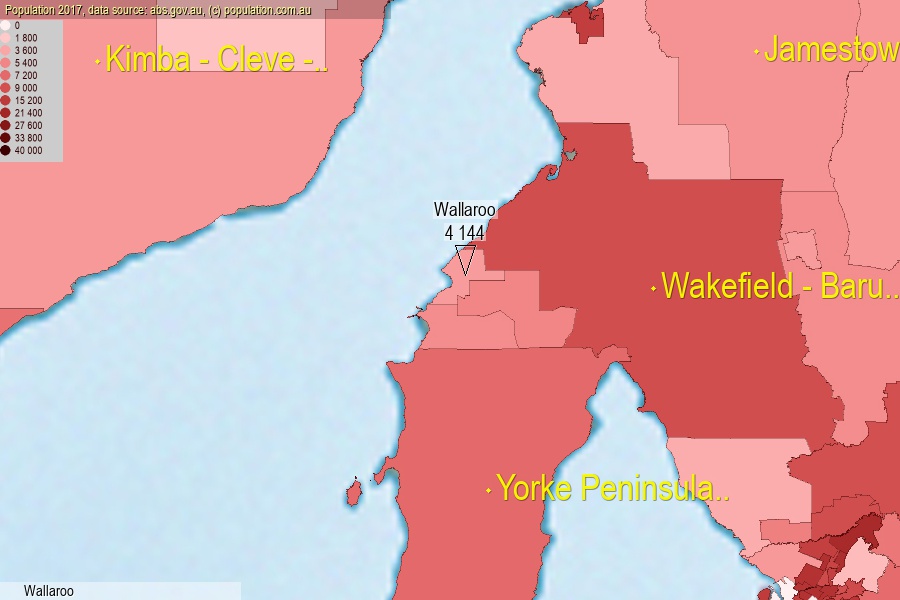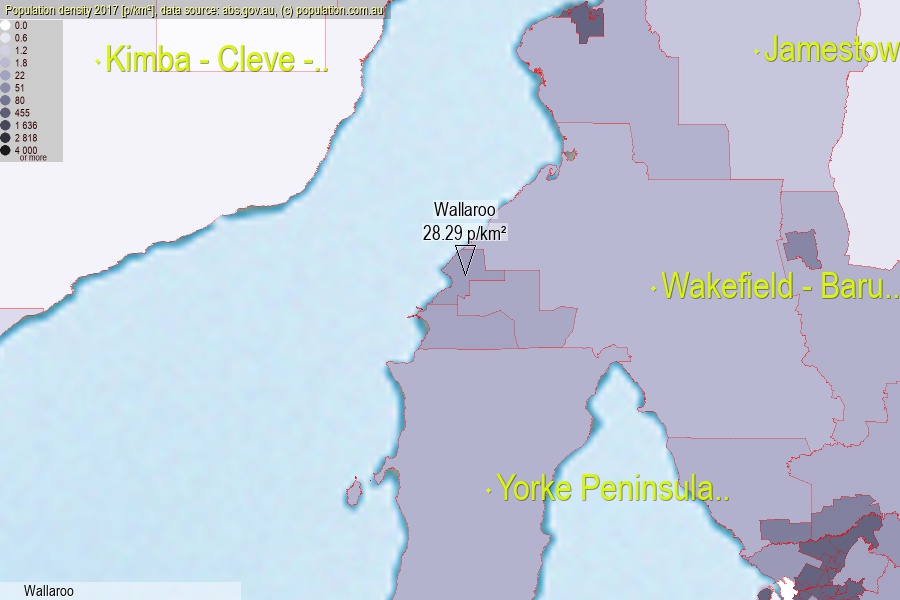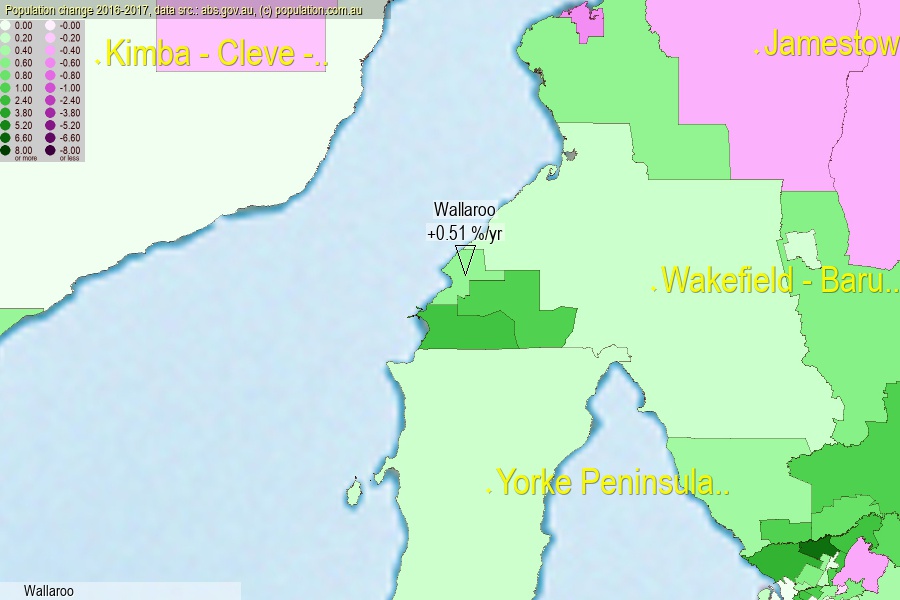 population.com.au
population.com.auLast official estimated population of Wallaroo (as Statistical Area Level 2) was 4 144 people (on 2017-06-30)[2]. This was 0.02% of total Australian population and 0.239% of SA population. Area of Wallaroo is 146.50 km², in this year population density was 28.29 p/km² . If population growth rate would be same as in period 2016-2017 (+0.51%/yr), Wallaroo population in 2025 would be 4 316. [0]



Click to enlarge. Wallaroo is located in the center of the images.
Population [people], population density [p./km²] and population change [%/year] [2]
View borders » (new window) [4]
[1991-1992] +1.12 %/Yr.
[1992-1993] +0.93 %/Yr.
[1993-1994] +0.50 %/Yr.
[1994-1995] +0.77 %/Yr.
[1995-1996] +0.38 %/Yr.
[1996-1997] +1.60 %/Yr.
[1997-1998] +0.51 %/Yr.
[1998-1999] +0.65 %/Yr.
[1999-2000] +1.39 %/Yr.
[2000-2001] +1.14 %/Yr.
[2001-2002] +1.39 %/Yr.
[2002-2003] +2.48 %/Yr.
[2003-2004] +1.97 %/Yr.
[2004-2005] +2.43 %/Yr.
[2005-2006] +0.97 %/Yr.
[2006-2007] +1.90 %/Yr.
[2007-2008] +2.99 %/Yr.
[2008-2009] +2.59 %/Yr.
[2009-2010] +2.24 %/Yr.
[2010-2011] +1.45 %/Yr.
[2011-2012] +2.59 %/Yr.
[2012-2013] +2.03 %/Yr.
[2013-2014] +2.04 %/Yr.
[2014-2015] +2.30 %/Yr.
[2015-2016] +1.88 %/Yr.
[2016-2017] +0.51 %/Yr.
[0] Calculated with linear interpolation from officially estimated population
[1] Read more about SA2 and Australian Statistical Geography Standard (ASGS) on abs.gov.au
[2] Population data from Australian Bureau of Statistics (Population and density: 2017; change: 2016-2017)
[3] Digital Boundaries: Australian Statistical Geography Standard (ASGS) 2016.
[4] Border coordinates are simplifyed using Ramer-Douglas-Peucker algorithm.